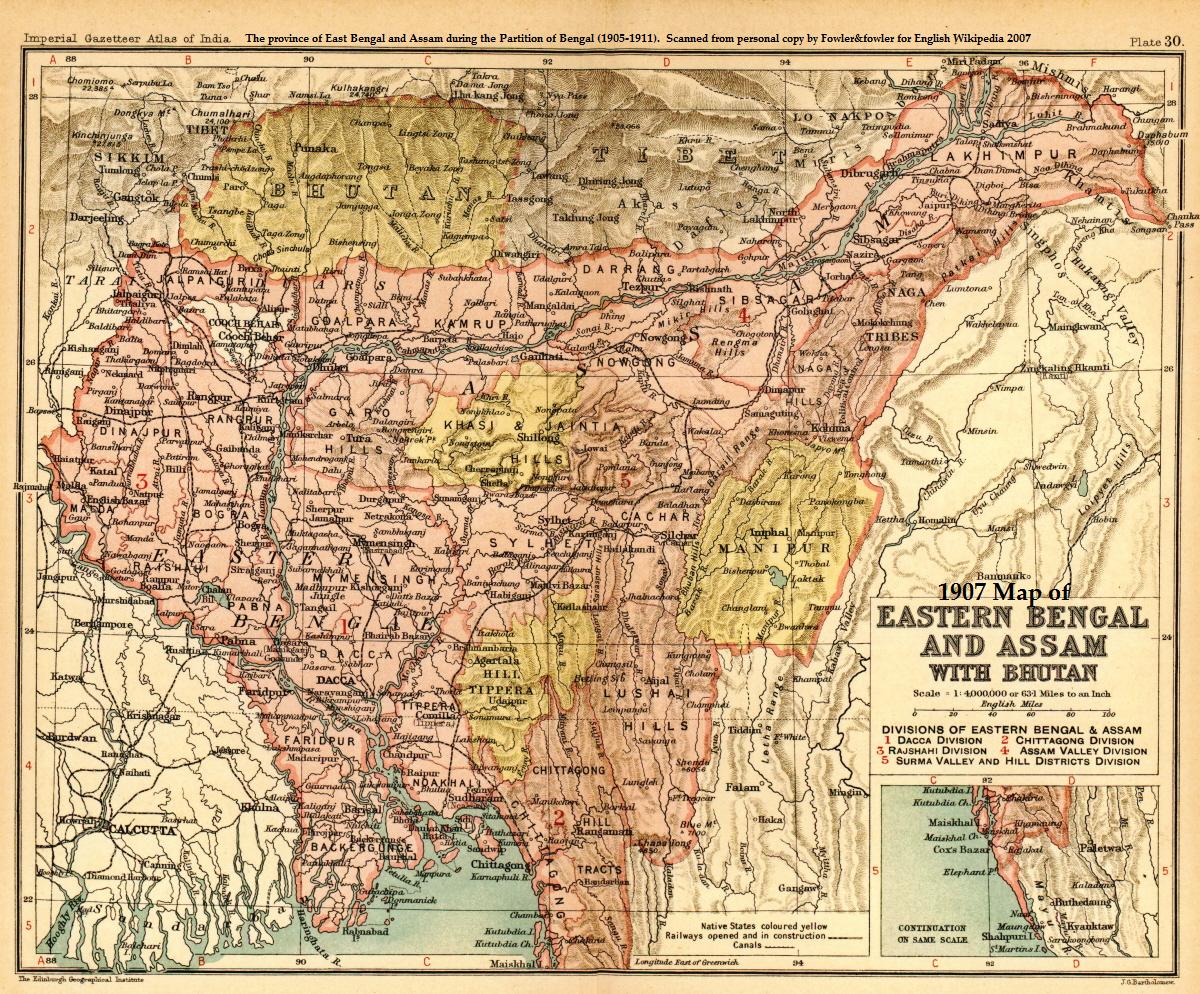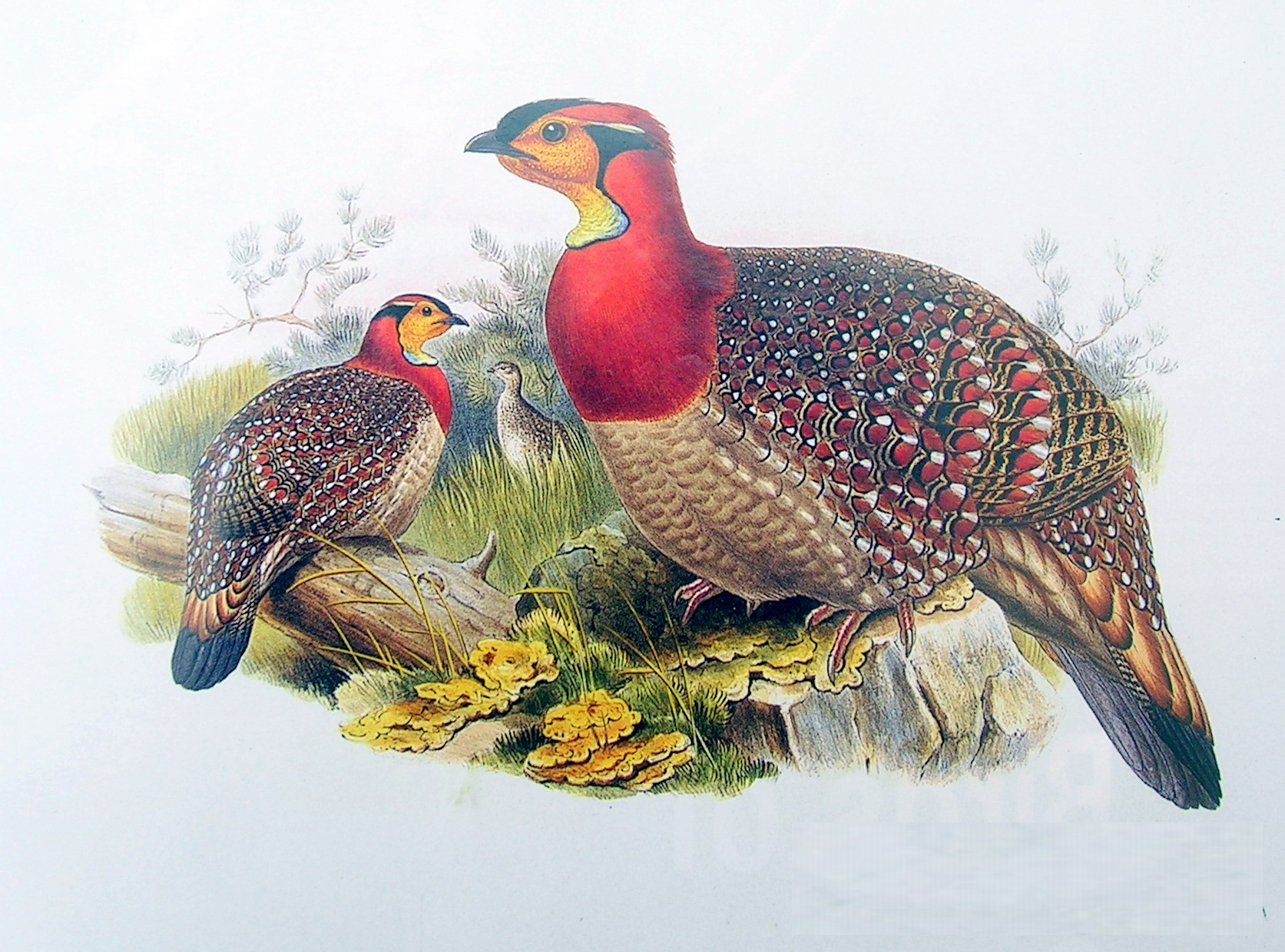|
Kabui
The Rongmei (also known as ''Kabui'') are one of the major indigenous communities a part of the Naga tribes of North-East India. The Rongmei Naga are a scheduled tribe under the Constitution of India. The Rongmei have a rich culture, customs and traditions. They share similarity with their kindred tribes of Zeme, Liangmai and Inpui which together are known as Zeliangrong. Rebellion Rongmei territory was conquered by the British in the nineteenth century. In 1891, they imposed a house tax on the people of Tamenglong. The Rongmei refused to pay any tax from 1891 to 1894. In response, C.L. Crawford, Assistant Political Agent of Manipur, used force to collect the tax from the Tamenglong hills in 1894. Four years of defiance by the Rongmei and its consequences aroused national consciousness among the Rongmei. Eventually, under the leadership of Haipou Jadonang and his successor Rani Gaidinliu, the Rongmei rebelled against British rule in the 1930s. This rebellion gave moment ... [...More Info...] [...Related Items...] OR: [Wikipedia] [Google] [Baidu] |
Haipou Jadonang
Jadonang Malangmei (1905-1931) popularly known as Haipou Jadonang was a Naga spiritual leader and political activist from Manipur, British India. He established the ''Heraka'' religious movement, which was based on the ancestral Naga religion, and declared himself to be the "messiah king" of the Nagas. His movement was widespread in the Zeliangrong territory before the conversion to Christianity. He also espoused the cause of an independent Naga kingdom ("Makam Gwangdi" or "Naga Raj"), which brought him in conflict with the colonial British rulers of India. He was hanged by the British in 1931, and succeeded by his cousin Rani Gaidinliu. Early life Haipou Jadonang Malangmei was born on 30 July 1905 Sunday at Puiluan (also Puiron or Kambiron) village of the present-day Nungba Sub-Division in Tamenglong district. His family belonged to the Malangmei clan of the Rongmei Naga tribe. He was youngest of the three sons of Thiudai and Tabonliu. His father Thiudai died when he was arou ... [...More Info...] [...Related Items...] OR: [Wikipedia] [Google] [Baidu] |
Inpui Naga People
The Inpui tribe are one of the indigenous Naga tribes of Manipur, India. The majority of the Inpuis are settled in the Haochong subdivision in Noney District, and in Tamenglong district, Manipur. Inpuis are also settled in Makuilongdi, Senapati headquarter, & Inthan (Waphong) in Senapati district and also in Changangei, Tamphagei, Yurembam, Pantilong, Sagolband in Imphal west district in Manipur. Moreover, Inpuis are also settled in Nagaland and Assam as well. The highest peak in Inpui Naga land is Antrimon 12 km far away from Haochong village and numerous rivers and streams run through the land like Tuilang, Lingkwa and Ra-ah. Some historians and anthropologists have earlier recorded them as Kabui along with Rongmei Rongmei may refer to: * Rongmei people, an ethnic group of north-eastern India * Rongmei language, the Sino-Tibetan language they speak See also *Kabui Naga language (other) {{Disambiguation Language and nationality disambiguation pa .... The Inpu ... [...More Info...] [...Related Items...] OR: [Wikipedia] [Google] [Baidu] |
Rongmei Language
Rongmei is a Sino-Tibetan language spoken by the Rongmei Naga community in Northeast India. It has been called Songbu and is close to Zeme and Liangmai. The language has been nomenclatured as "Ruangmei" and studied as a First Language paper from class I to X of Board of Secondary Education, Manipur. Ruangmei is studied as a Minor Indian Language (MIL) in Class XI & XII of Council of Higher Secondary Education Manipur (COHSEM). Geography Rongmei is mostly spoken in the three states of Assam, Manipur and Nagaland. It is the most spoken language in Tamenglong district Tamenglong district ( Meitei pronunciation:/tæmɛŋˈlɒŋ/) is one of the 16 districts of Manipur state in northeastern India. History In 1919, the British Government established four sub-divisions office in Manipur Hills known as North Eas ... and Noney district; and the second most spoken language in Imphal West district and Bishnupur district of Manipur. Phonology Consonants Vowels A lo ... [...More Info...] [...Related Items...] OR: [Wikipedia] [Google] [Baidu] |
Northeast India
, native_name_lang = mni , settlement_type = , image_skyline = , image_alt = , image_caption = , motto = , image_map = Northeast india.png , map_alt = Northeast india map.png , coordinates = , coordinates_footnotes = , subdivision_type = Country , subdivision_name = , subdivision_type1 = States , subdivision_name1 = , subdivision_type2 = Largest city , subdivision_name2 = Guwahati , subdivision_type3 = Major cities ( 2011 Census of India) , subdivision_name3 = [Baidu] |
List Of Naga Tribes
Naga is an umbrella term for several indigenous communities in Northeast India and Upper Burma. The word Naga originated as an exonym. Today, it covers a number of ethnic groups that reside in the Indian states of Nagaland, Manipur, Assam and Arunachal Pradesh and also in Myanmar. Before the arrival of the British, the term "Naga" was used in Assam to refer to certain isolated ethnic groups. The British adopted this term for a number of ethnic groups in the surrounding area, based on loose linguistic and cultural associations. Nagaland became the 16th state on 1 December 1965. S. R. Tohring (2010) lists 66 Naga ethnic groups whereas Kibangwar Jamir (2016) lists 67 ethnic groups. The 1991 Census of India listed 35 Naga groups as Scheduled Tribes: 17 in Nagaland, 15 in Manipur and 3 in Arunachal Pradesh. List of Naga ethnic groups File:Viswe–mi women.jpeg, Angami women File:Aos 2219b.jpg, Ao woman in traditional attire File:Koniak 0382b.jpg, A Konyak chief in his traditi ... [...More Info...] [...Related Items...] OR: [Wikipedia] [Google] [Baidu] |
Rani Gaidinliu
Gaidinliu Pamei (26 January 1915 – 17 February 1993) popularly known as Rani Gaidinliu was a Naga spiritual and political leader who led a revolt against British rule in India. At the age of 13, she joined the Heraka religious movement of her cousin Haipou Jadonang. The movement later turned into a political movement seeking to drive out the British from Manipur and the surrounding Naga areas. Within the Heraka faith, she came to be considered an incarnation of the Goddess Cherachamdinliu. Gaidinliu was arrested in 1932 at the age of 16, and was sentenced to life imprisonment by the British rulers. Jawaharlal Nehru met her at Shillong Jail in 1937, and promised to pursue her release. Nehru gave her the title of "Rani" ("Queen"), and she gained local popularity as Rani Gaidinliu. She was released in 1947 after India's independence, and continued to work for the upliftment of her people. An advocate of the ancestral Naga religious practices, she staunchly resisted the conversio ... [...More Info...] [...Related Items...] OR: [Wikipedia] [Google] [Baidu] |
Ethnic Groups In Northeast India
, native_name_lang = mni , settlement_type = , image_skyline = , image_alt = , image_caption = , motto = , image_map = Northeast india.png , map_alt = Northeast india map.png , coordinates = , coordinates_footnotes = , subdivision_type = Country , subdivision_name = , subdivision_type1 = States , subdivision_name1 = , subdivision_type2 = Largest city , subdivision_name2 = Guwahati , subdivision_type3 = Major cities ( 2011 Census of India) , subdivision_name3 = [Baidu] |
Gaikhangam Gangmei
Gaikhangam Gangmei (born 12 November 1950) is an Indian politician and member of Congress Working Committee. He served as first Deputy Chief Minister of Manipur from 2012-2017 and also as MPCC president. Personal life Gangmei was born in Gaidimjang, Khoupum valley in the Rongmei Naga family of Khangsillung and Lansillung. The youngest of eight siblings, Gangmei at the age of 12 adopted Christianity Christianity is an Abrahamic monotheistic religion based on the life and teachings of Jesus of Nazareth Jesus, likely from he, יֵשׁוּעַ, translit=Yēšūaʿ, label=Hebrew/Aramaic ( AD 30 or 33), also referred to as Jesu ... along with his mother. History * Elected MLA from 54-Nungba (ST) A/C, 3rd Manipur Legislative Assembly 1980 * Minister of State -- (Edn., Sw, Arts & Cult. & Sports) 1983-1984 * Elected MLA from 54-Nungba ST-A/C, 4th Manipur Legislative Assembly 1984 * Minister of State (Tribal Dev. & District Council) Manipur (Indep. Charge) 198 ... [...More Info...] [...Related Items...] OR: [Wikipedia] [Google] [Baidu] |
Scheduled Tribes Of Manipur
A schedule or a timetable, as a basic time-management tool, consists of a list of times at which possible tasks, events, or actions are intended to take place, or of a sequence of events in the chronological order in which such things are intended to take place. The process of creating a schedule — deciding how to order these tasks and how to commit resources between the variety of possible tasks — is called scheduling,Ofer Zwikael, John Smyrk, ''Project Management for the Creation of Organisational Value'' (2011), p. 196: "The process is called scheduling, the output from which is a timetable of some form". and a person responsible for making a particular schedule may be called a scheduler. Making and following schedules is an ancient human activity. Some scenarios associate this kind of planning with learning life skills. Schedules are necessary, or at least useful, in situations where individuals need to know what time they must be at a specific location to receiv ... [...More Info...] [...Related Items...] OR: [Wikipedia] [Google] [Baidu] |
Christianity
Christianity is an Abrahamic monotheistic religion based on the life and teachings of Jesus of Nazareth Jesus, likely from he, יֵשׁוּעַ, translit=Yēšūaʿ, label=Hebrew/Aramaic ( AD 30 or 33), also referred to as Jesus Christ or Jesus of Nazareth (among other names and titles), was a first-century Jewish preacher and religious .... It is the Major religious groups, world's largest and most widespread religion with roughly 2.38 billion followers representing one-third of the global population. Its adherents, known as Christians, are estimated to make up a majority of the population in Christianity by country, 157 countries and territories, and believe that Jesus in Christianity, Jesus is the Son of God (Christianity), Son of God, whose coming as the Messiah#Christianity, messiah was Old Testament messianic prophecies quoted in the New Testament, prophesied in the Hebrew Bible (called the Old Testament in Christianity) and chronicled in the New Testamen ... [...More Info...] [...Related Items...] OR: [Wikipedia] [Google] [Baidu] |
Nagaland
Nagaland () is a landlocked States and union territories of India, state in the northeast India, northeastern region of India. It is bordered by the Indian states of Arunachal Pradesh to the north, Assam to the west, Manipur to the south and the Sagaing Region of Myanmar to the east. Its capital city is Kohima and its largest city is Dimapur. The state has an area of with a population of 1,980,602 as per the 2011 Census of India, making it one of the smallest states in India.Census of India 2011 Govt of India Nagaland became the 16th state of India on 1 December 1963. It is home to a rich variety of natural, cultural and environmental resources. Nagaland is a mountainous state and lies between the parallels of 95 and 94 degrees east longitude and 25.2 and 27.0 degrees latitude north. ... [...More Info...] [...Related Items...] OR: [Wikipedia] [Google] [Baidu] |




